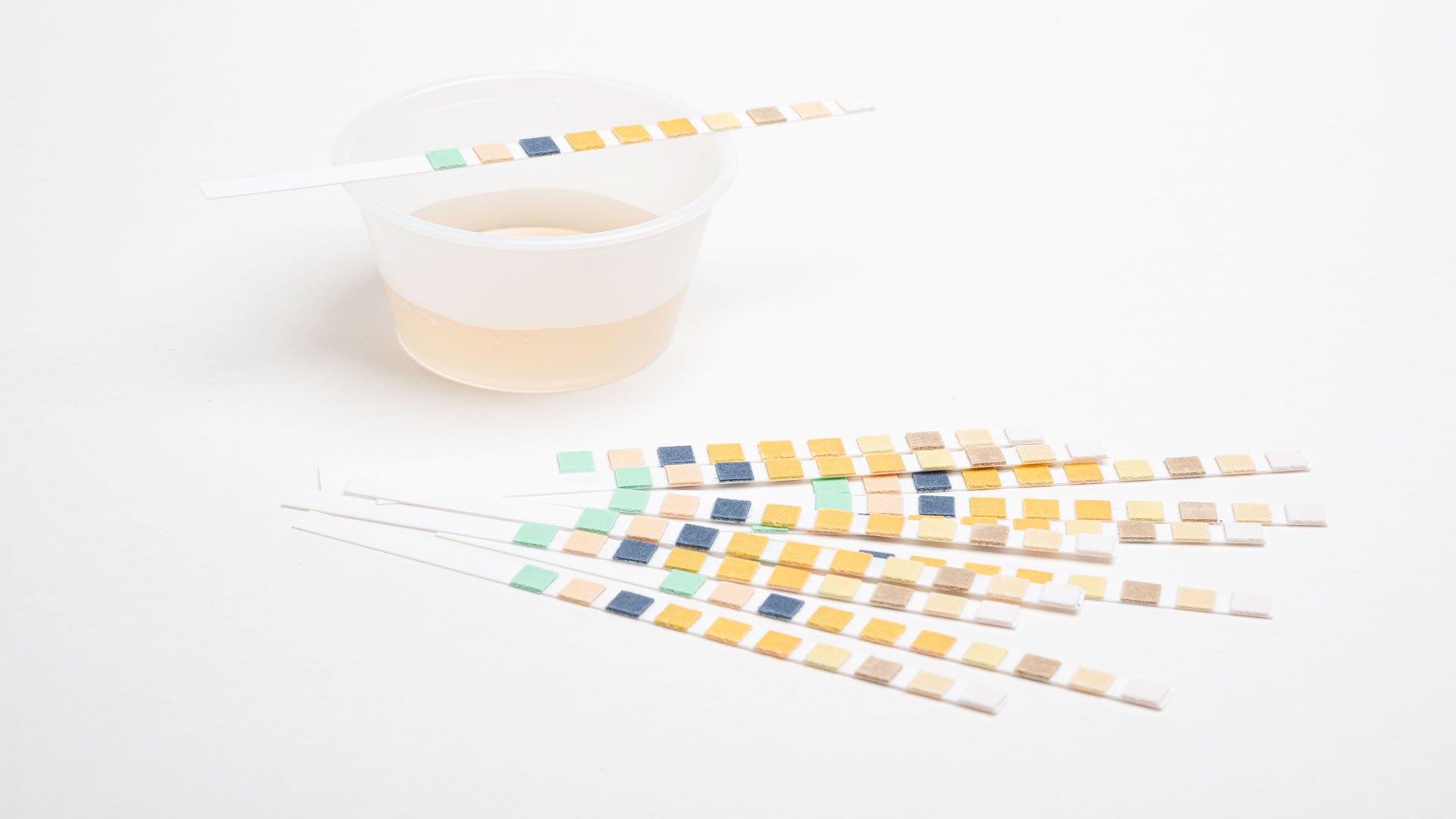As a parent of a child with type 1 diabetes, you have to make sure that your child is eating right, looking after their health, and taking insulin as advised. You also have to be on the lookout and ensure that you’re not missing any red flags associated with the complications of diabetes.
Diabetic ketoacidosis (DKA) is an acute and life-threatening condition that usually develops in patients with T1D.
We’ll look into what DKA is and the signs and symptoms that you should keep an eye out for. We will also discuss what you can do in case you suspect the presence of ketones in your child’s urine and how to prevent it from escalating into DKA.
What is Diabetes Ketoacidosis (DKA)?
Diabetic ketoacidosis is an acute, severe, and life-threatening complication of T1D. It is a metabolic condition characterized by high blood sugar levels and high blood ketone levels.
Several things can trigger DKA, such as trauma, infection, and other illnesses. Still, the most important trigger is failure to administer adequate insulin.
Normally, the body utilizes glucose for energy. When there’s a lack of insulin in the body, like in T1D, the glucose cannot be absorbed into cells. So, high levels of glucose remain in the bloodstream.
Unable to turn glucose into energy, the body turns to other energy sources. The first source it starts utilizing is fat.
High levels of fat are broken down in the liver, and as a result, ketones are formed. When this occurs, the rate of production of ketones surpasses the rates at which they are utilized, which causes a rise in ketones in the bloodstream and urine.
If there are dangerously high levels of ketones in the blood, it leads to a metabolic disturbance known as acidosis, hence the name Diabetic Ketoacidosis.
Sometimes, if the patient is dehydrated, ketones are not excreted by urine fast enough either, which can further worsen the condition.
Signs and Symptoms of DKA in Kids
Early detection of the condition is absolutely vital to ensure its timely treatment. It can start out with some subtle symptoms that develop slowly, but the condition and symptoms can deteriorate rapidly.
While there are various symptoms of DKA, here are the most important ones.
Initial, slow symptoms may include:
- Excessive thirst
- Increased urination
These are signs of poor diabetic control or increased blood glucose levels and should be taken seriously in children with type 1 diabetes.
Once the condition gets more serious, the following symptoms may appear rapidly:
- Rapid breathing
- Fruity-smelling breath (due to high levels of ketones in the body)
- Dry skin and mouth (signs of dehydration)
- Nausea and vomiting
- Stomach pain
- Feeling very tired or lethargic.
- Flushed face
- Headache
- Muscle stiffness or aches
Immediate Actions to Take
If you notice any of the signs and symptoms of DKA in your child, you need to be on high alert and take all the right steps to make sure that their health is not at risk.
If you suspect that your child is developing DKA, you need to monitor their blood glucose and ketone levels immediately.
- Use an at-home blood glucose testing apparatus, and if their sugar levels are over 240 mg/dl, you need to test their ketones immediately.
- Over-the-counter urine ketone kits are available, and you should consider always keeping one at home. The kit will show if there are high levels of ketones in the urine, and if the ketones are high and the blood sugar levels are over 240 mg/dL, you need to seek medical help immediately.
If the kit does not show high ketone levels in the urine, but the blood sugar levels are still above 240 mg/dl, you need to monitor ketone levels and keep testing for them every 4 to 6 hours.
Meanwhile, you should try to keep your child hydrated and bring down their blood sugar. You also need to ensure that your child is not overexerting themselves or exercising, which can worsen their condition.
In a urine ketone test, a reading of more than 2+ is suggestive of DKA and 3+ means you should seek medical care immediately.
You should read the manufacturer’s instructions to get an exact idea of how the kit will represent high ketone levels.
Blood ketone levels have various cutoffs:
- Less than 0.6 mmol/L – Normal
- 0.6 to 1.5 mmol/L – A slightly increased risk of DKA, and the test should be repeated again in 2 hours if the blood glucose levels are not too high, and your child is feeling fine.
- 1.6 to 2.9mmol/L – An increased risk of DKA. If this is the case, it’s best to reach out to a doctor immediately.
- 3 mmol/L or above – Extremely dangerous and indicates a very high risk of DKA. It’s important to make your way to the ER.
If the blood glucose levels remain persistently high, reach 300 mg/dl, and don’t lower for hours, you need to seek medical attention, regardless of the ketone test result.
If your child is vomiting, has fruity breath, and is simply not feeling well, regardless of blood sugar levels, you should seek medical attention immediately as these are symptoms of raised ketones and DKA.
How to Prevent DKA?
Again, the main factors that can cause DKA are:
- Insufficient insulin: This can occur due to missed insulin doses, inadequate insulin therapy, or an increase in the body’s need for insulin (e.g., during illness or stress).
- High blood sugar levels: Elevated blood sugar levels contribute to the production of ketones.
- Dehydration: High blood sugar causes increased urination, leading to fluid loss and dehydration.
Although DKA is rare, you need to ensure your kid is safe and has their blood glucose levels in a safe range. To ensure that is the case, you need to have good control over diabetes in general, which focuses on the following things:
Diet
One of the first things that people with T1D learn is that they should follow one certain diet or another. Opinions vary, but most people agree that a diet that is generally lower (relative to the “normal” American diet) in terms of carbohydrates and added sugars is advisable.
Gluroo has a few articles with snack and meal ideas if you need some inspiration.
Make sure you help your child find a healthy and balanced diet for them.
Physical Activity
Just like diet, physical exercise is very important for managing type 1 diabetes.
An active lifestyle is a healthy lifestyle, regardless of whether someone has diabetes. For diabetics, it’s doubly helpful. Regular, consistent exercise helps to maintain in-range blood glucose levels and reduce insulin resistance.
Insulin
If you or your child is a T1D, insulin is so necessary and obvious that it’s hardly worth mentioning. We need it to survive!
Too little insulin can lead to raised blood glucose levels and, eventually, DKA.
Blood Glucose Level Monitoring
Having access to your child’s BGL readings at all times is hugely beneficial. You’ll be aware of their daily trends and patterns in their glucose management, and you can be alerted if your child’s blood glucose levels are ever dangerously high or low.
Gluroo’s free app is built for all T1D journeys to help you significantly reduce the time, worry, and effort typically tied to managing T1D. With Gluroo, you can connect your child’s CGM and pump and have constant access to their real-time data, providing actionable insights and predictive alerts to help you worry less and live life more.
Being Prepared for a Complication is Key!
Knowing the symptoms of DKA allows you to act ahead of time and prevent the situation from escalating.
As a parent of a child with T1D, being prepared for any possible complication is key. But know that with proper diabetes control, the risk for complications decreases significantly. So, you just need to do your best to help your child keep their condition under control.
Gluroo can help a lot with that. Built by parents, Gluroo not only allows you to stay on top of your child’s levels but it can also help teach your child responsibility by allowing them to easily log their meals and exercise and act on BGL alerts before you step in.
You can download Gluroo for free today.




